#san rafael swell
Explore tagged Tumblr posts
Photo

San Rafael Swell Pictographs & Petroglyphs
518 notes
·
View notes
Text

27 notes
·
View notes
Text

The San Rafael Swell, 1989
Mickey Crisp
87 notes
·
View notes
Video
Family by Jeff Goldberg
33 notes
·
View notes
Text

There is something about the colors, laters and textures of the the desert southwest that’s will always amaze me.
10 notes
·
View notes
Text



Photos take from my "Backyard."
2 notes
·
View notes
Text



#San Rafael swell#Henry mountains#colorado plateau#adventure#travel#my photo#southwest#desert#utah#photography#aesthetic#scenery
30 notes
·
View notes
Text


Places I've been!
0 notes
Text

San Rafael Swell, Emery County, Utah, USA
Alex Moliski
#San Rafael Swell#Emery County#Utah#USA#UTNature#US#United States of America#United States#North America
0 notes
Text
Window Blind Peak in the San Rafael Swell
Window Blind Peak is one of the many phenomenal geologic formations in Utah's San Rafael Swell. A view on an autumn morning as we were heading into the canyons region.
#2023#Autumn#Black Dragon Canyon#BlackDragoonCanyon#Cary#Cary Leppert#CaryLeppert#cliff#desert#Fall#Landscape#Leppert#mesa#Mountains#October#photo#Photography#red#San Rafael#San Rafael Swell#sandstone#SanRafael#SanRafaelSwell#Saunter#TrailDog Artisans#Traildogartisans#travel#uplift#UT#Utah
0 notes
Text
Swasey Cabin
Swasey Cabin was built in 1921 in the heart of Sinbad Country, by Joseph Swasey. The Cabin was built from Douglas Dir from Eagle Canyon near by. Remnants of the Swasey family farm depict the western heritage. The Swasey family grazed livestock in the area for the later part of the nineteenth century. The cabin served as shelter for members of the Swasey family and other cowboys. There is also…
View On WordPress
0 notes
Text
Lower Crack Canyon Hike - San Rafael Swell, UT

The last time we were in this area, we hiked Upper Crack Canyon. Unfortunately, we got stymied by a pour-off that we couldn’t navigate. Today we hiked up Lower Crack Canyon to that point. It was about 10 miles roundtrip.
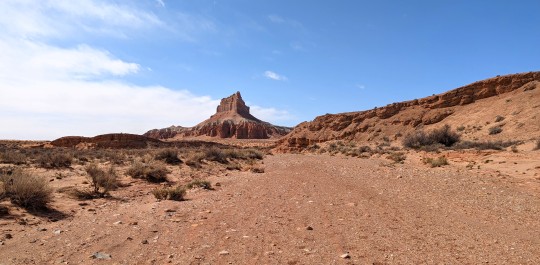
The hike starts in the same wash that heads toward Wild Horse Canyon, but the signs lead you out of the wash and toward Lower Crack Canyon.
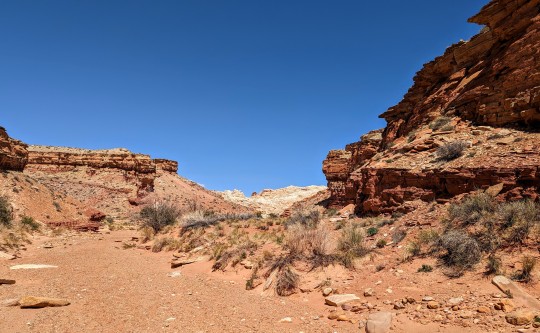
Finally, the walls started to get taller.
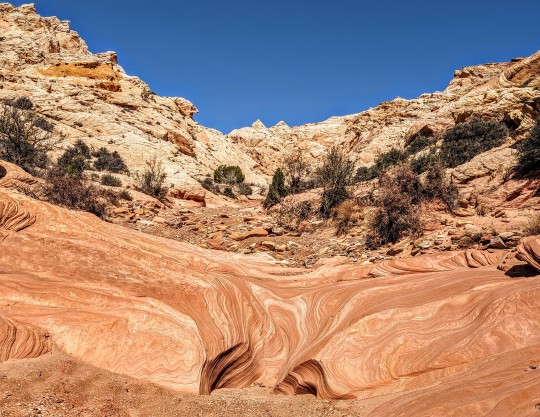
Beautiful pour-off in Lower Crack Canyon.

The walls got steeper and closer together, as we got closer to the narrows.
Entering the narrows:





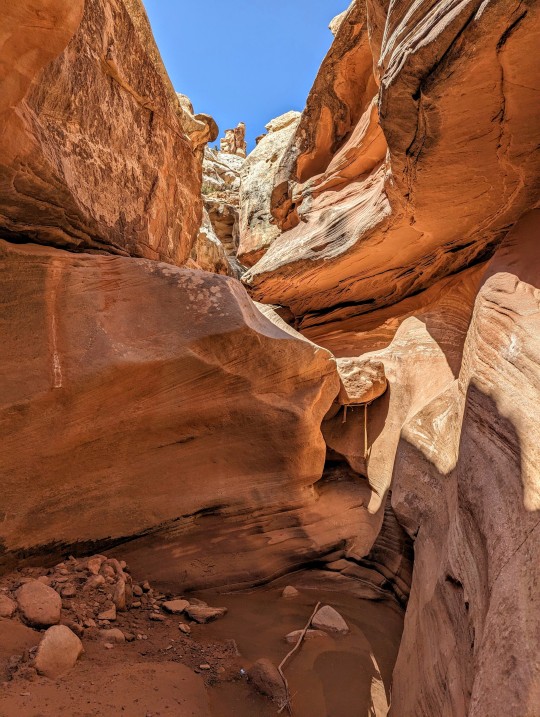
Made it to our turn-around point, we didn’t feel like getting our feet wet OR trying to navigate our way up that rope. We touched the big rock on the left and called it “done”.
0 notes
Text

Eagle Canyon in the San Rafael Swell, Utah, 1984
Mickey Crisp
27 notes
·
View notes
Text
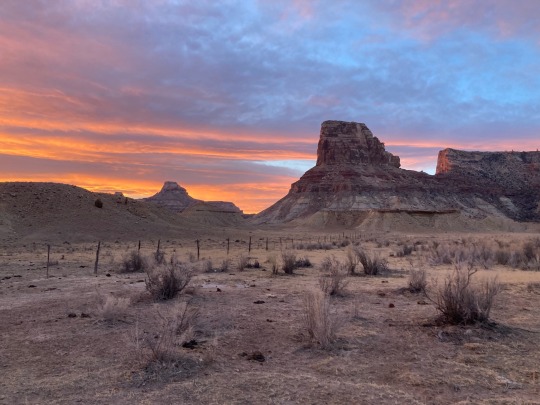
Sunrise in the San Rafael Swell, March 2, 2024.
#utah#no filter#utahphotographer#desert#public lands#utah photos#utahunfiltered#sunrise#sanrafaelswell
277 notes
·
View notes
Text
FOSSIL FRIDAY
Today we will talk about Petrified Wood!
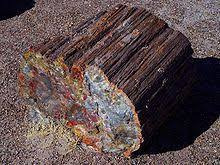
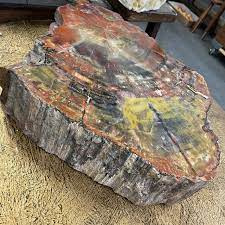
One of the most common fossils, petrified wood is is tree or tree-like wood that has either been fossilized through replacement or permineralization. Usually, the organic material is replicated by silica (quartz or it's microcrystalline forms opal or chalcedony).
Petrified wood forms when woody plants are buried in saturated sediments with dissolved minerals in solution. The lack of oxygen slows decay and allows fossilization to occur.

Below are petrified wood and cycad specimens I have collected over the years from various localities I have worked at. All come from Late Jurassic sites.
The first is from the Salt Wash Member of the Morrison Formation in northwestern Colorado. It has been replaced by silica, most likely the microcrystalline quartz form, chalcedony.

The second is from the same location and has definitely been replaced by chalcedony. In this case, it looks to be the "flint" variety.
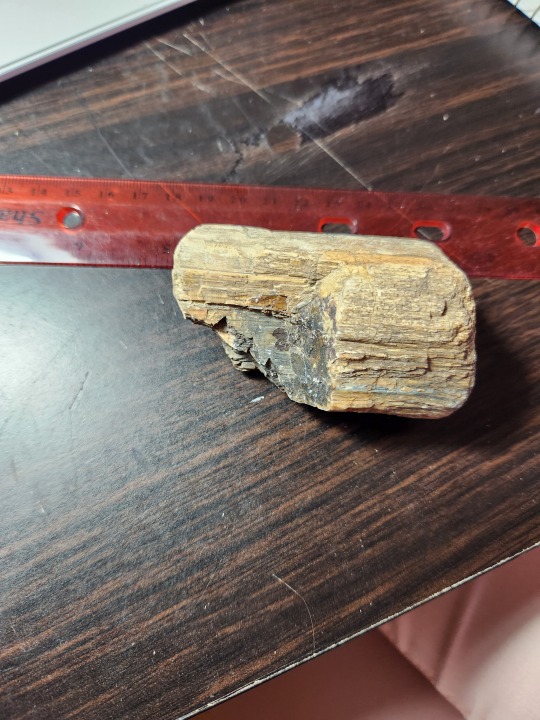
The third photo contains pieces of of wood from the Late Jurassic Swift Formation in northwest central Montana (It's a huge state. I need to be that weirdly specific). These are partially petrified and partially coalified. They still retain some of the original organic material which leaves a black residue on the fingers.
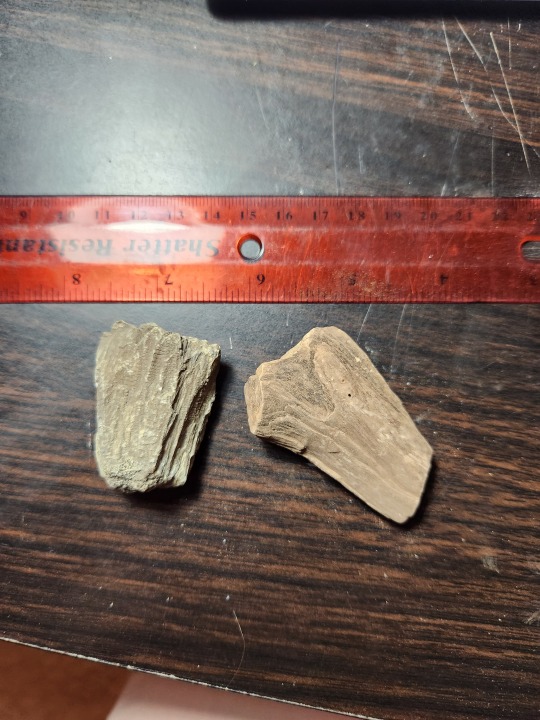

The fourth photograph are pieces that came from the Brushy Basin Member of the Morrison Formation in the San Rafael Swell of Utah. These have been permineralized by quartz.

Finally, the last two show cycads, a type of woody plant that was a prominent part of the Mesozoic woodlands and prairies. These specimens came from the same Salt Wash site as the first two tree specimens. These have also been replaced by chalcedony.
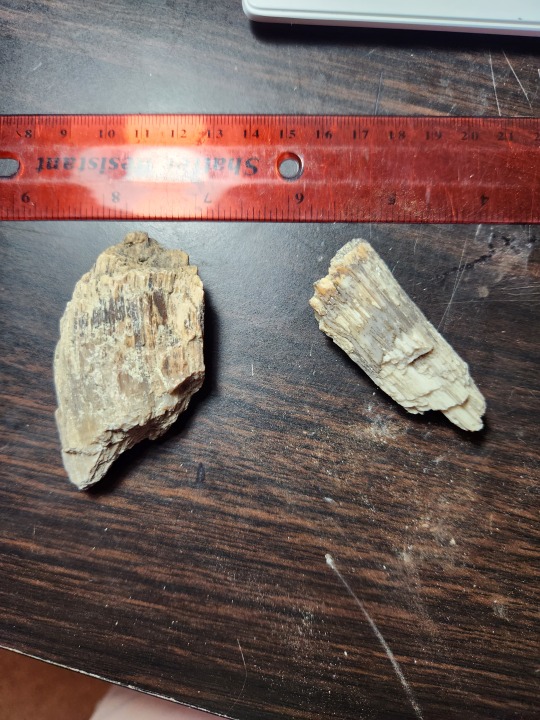

99 notes
·
View notes

